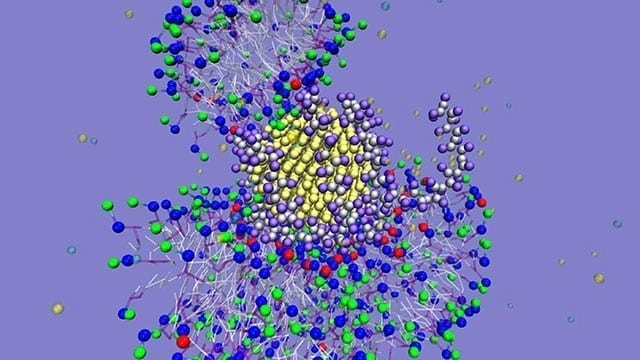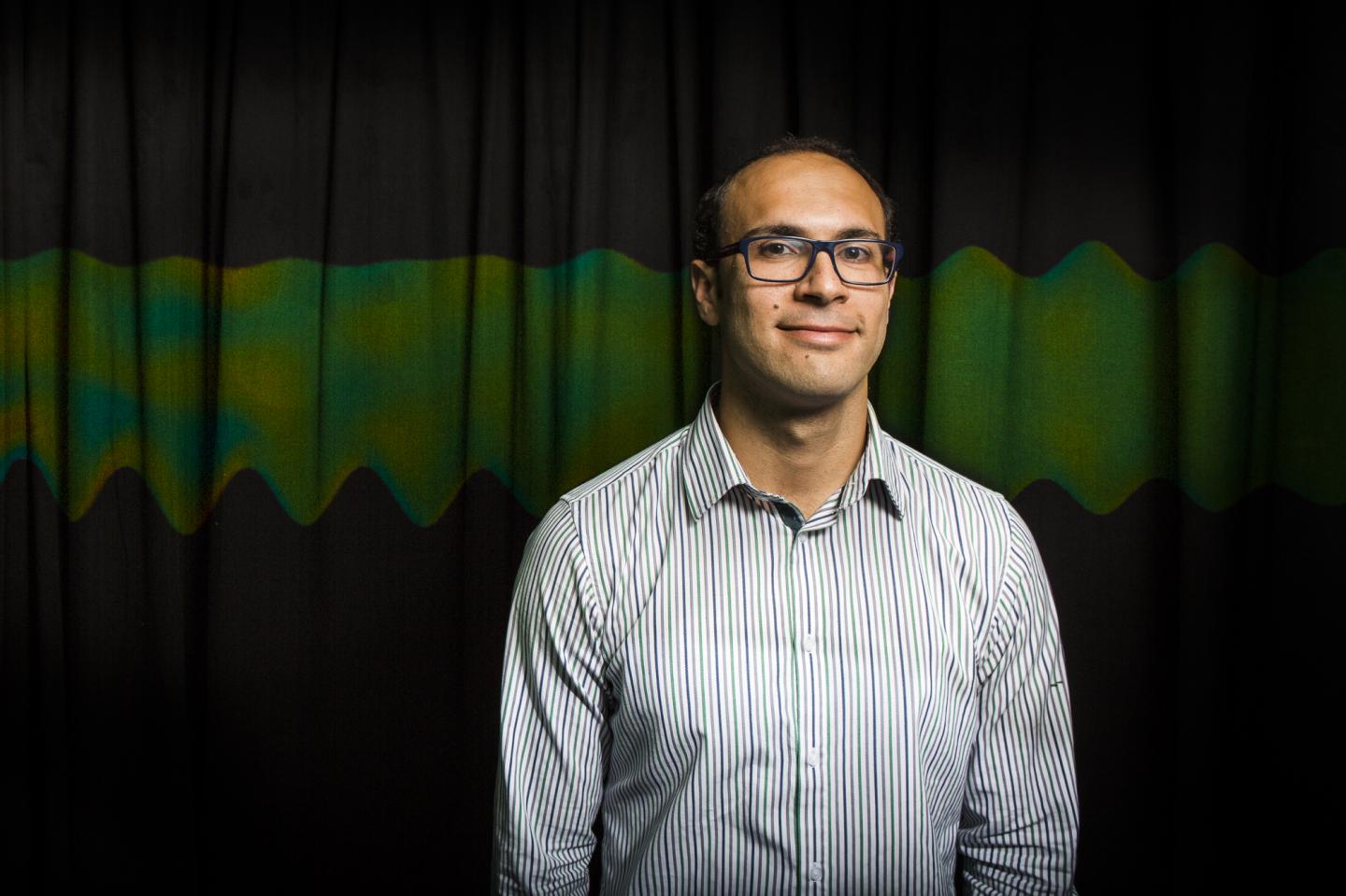
In industrialized countries, a high number of people suffer from arteriosclerosis – with fatal consequences: Deposits in the arteries lead to strokes and heart attacks. Researchers under the leadership of the University of Bonn have developed a method for guiding replacement cells to diseased vascular segments using nanoparticles. They demonstrated in mice that the fresh cells actually exert their curative effect in these segments. However, much research remains to be done prior to use in humans.
In arterial calcification (arteriosclerosis), pathological deposits form in the arteries and this leads to vascular stenosis. Strokes and heart attacks are a frequent outcome due to the resultant insufficient blood flow. Endothelial cells which line the blood vessels play an important role here. “They produce nitric oxide and also regulate the expansion of the vessels and the blood pressure,” explains junior professor Dr. med. Daniela Wenzel from the Institute of Physiology I of the University of Bonn. Damage to the endothelial cells is generally the insidious onset of arteriosclerosis.
A team of researchers working with Jun.-Prof. Wenzel, together with the Technische Universität München, the Institute of Pharmacology and Toxicology at the University of Bonn Hospital and the Physikalisch-Technische Bundesanstalt Berlin, developed a method with which damaged endothelial cells can regenerate and which they successfully tested in mice. The scientists transferred the gene for the enzyme eNOS into cultured cells with the aid of viruses. This enzyme stimulates nitic oxide production in the endothelium like a turboloader. “The enzyme is an essential precondition for the full restoration of the original function of the endothelial cells,” reports Dr. Sarah Vosen from Jun.-Prof. Wenzel’s team.
A magnet delivers the nanoparticles to the desired site
Together with the gene, the scientists also introduced tiny nanoparticles, measuring a few hundred nanometers (one-millionth of a millimeter), with an iron core. “The iron changes the properties of the endothelial cells: They become magnetic,” explains Dr. Sarah Rieck from the Institute of Physiology I of the University of Bonn. The nanoparticles ensure that the endothelial cells equipped with the “turbo” gene can be delivered to the desired site in the blood vessel using a magnet where they exert their curative effect. Researchers at the Technische Universität München have developed a special ring-shaped magnet configuration for this which ensures that the replacement cells equipped with nanoparticles line the blood vessel evenly.
The researchers tested this combination method in mice whose carotid artery endothelial cells were injured. They injected the replacement cells into the artery and were able to position them at the correct site using the magnet. “After half an hour, the endothelial cells adhered so securely to the vascular wall that they could no longer be flushed away by the bloodstream,” says Jun.-Prof. Wenzel. The scientists then removed the magnets and tested whether the fresh cells had fully regained their function. As desired, the new endothelial cells produced nitric oxide and thus expanded the vessel, as is usual in the case of healthy arteries. “The mouse woke up from the anesthesia and ate and drank normally,” reported the physiologist.
Transfer to humans requires additional research
Normally, doctors surgically remove vascular deposits from the carotid artery and in some cases place a vascular support (stent) to correct the bottleneck in the crucial blood supply. “However, these areas frequently become blocked with deposits once again,” reports Jun.-Prof. Wenzel. “In contrast, we are getting to the root of the problem and are restoring the original condition of healthy endothelial cells.” The researchers hope that what works in mice is also possible in humans, in principle. However, there are still many challenges to overcome. Jun.-Prof. Wenzel: “There is still a considerable need for research.”
Read more: Using nanoparticles to combat arteriosclerosis
The Latest on: Arteriosclerosis
[google_news title=”” keyword=”arteriosclerosis” num_posts=”10″ blurb_length=”0″ show_thumb=”left”]
via Google News
The Latest on: Arteriosclerosis
- Can sudoku really keep your brain younger for longer?on May 7, 2024 at 9:00 am
Dementia is common – more than 400,000 Australians are living with it – but it’s not an inevitable part of ageing. There are ways to lower your risk, and the sooner you start, the better off you’ll be ...
- MHH Cardiology implants latest generation of self-dissolving stentson May 7, 2024 at 1:24 am
Until now, all stents were made of metal and remained in the body, sometimes for decades, depending on the age of the patient. This has various disadvantages, but until now seemed unavoidable.
- Japan study on town residents finds walking 8,000 steps a day good for healthon May 6, 2024 at 3:00 pm
Walking 8,000 steps per day is effective in lowering neutral fat as well as reducing small dense LDL-cholesterol and the risk of ...
- How a Florida man overcame a broken femur, fractured pelvis and now heart diseaseon May 2, 2024 at 2:36 pm
Despite a handful of serious medical setbacks, this avid cyclist still sees the good in life. For the most part, families are wonderful. They give us support, encouragement and love. But they also ...
- Greene County inmate's death ruled accidental, but jail staff members remain on paid leaveon April 17, 2024 at 5:41 pm
arteriosclerosis, and hypertensive heart disease. Springfield police arrested Thorne following a trespassing call and said that Thorne attempted to escape a patrol vehicle by kicking out a window.
- What Is Atherosclerosis?on April 10, 2024 at 5:00 pm
Atherosclerosis is a form of arteriosclerosis, otherwise known as hardening of the arteries. The terms “atherosclerosis” and “arteriosclerosis” are sometimes used interchangeably ...
- Microplastics Found Clogging Human Arterieson March 9, 2024 at 4:00 am
"I'm a cardiologist for three decades plus and I never envisioned we'd have microplastic in our arteries and its presence would accelerate arteriosclerosis." To be clear, this study is still ...
- Cold-Blooded Dept.on March 6, 2024 at 5:34 pm
It’s not only that they don’t develop arteriosclerosis. No two turtles ever lunched with the idea of promoting anything. And they never use the word “implementation.” ...
- Page settingson January 9, 2024 at 11:45 am
Symptoms vary depending on the clogged artery. The exact cause of arteriosclerosis is unknown. It may start with a damage or injury to the inner layer of an artery (the blood vessel which supplies ...
- Treating Disease With Vaccineson October 7, 2017 at 6:53 am
"Someday, we might make vaccines for Alzheimer's, neurological diseases, arteriosclerosis, and maybe even obesity," says Ertl. Other targets for therapeutic vaccines include viruses like herpes ...
via Bing News











